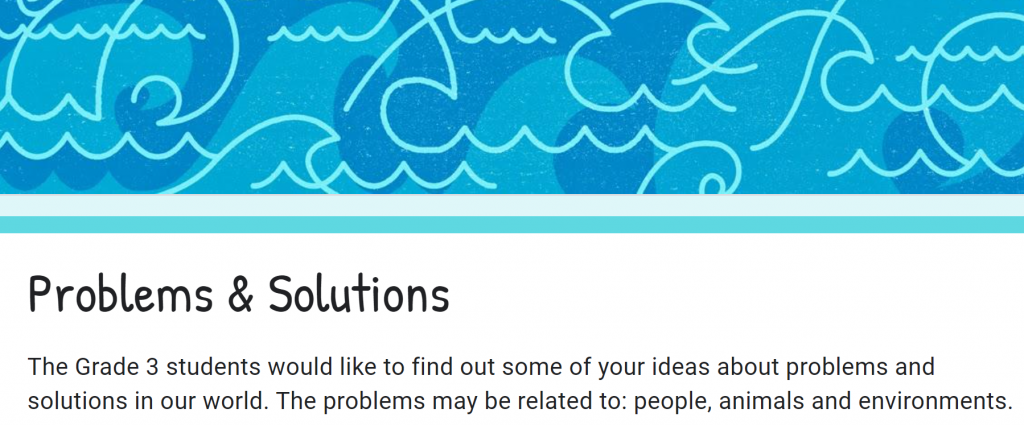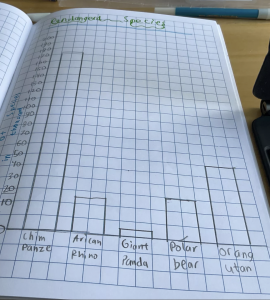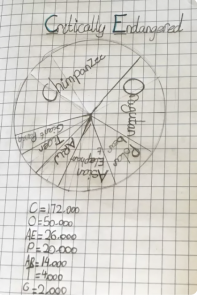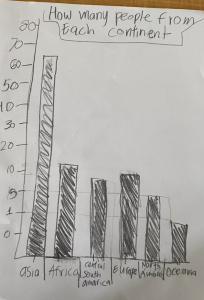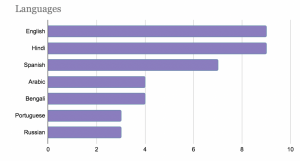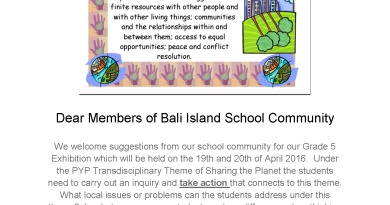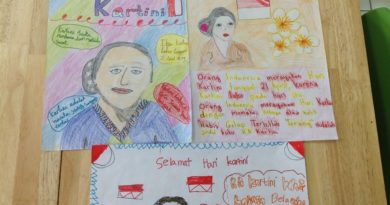Primary eNews – April 1, 2022
Side-Splitting Language Lessons in Grade 3
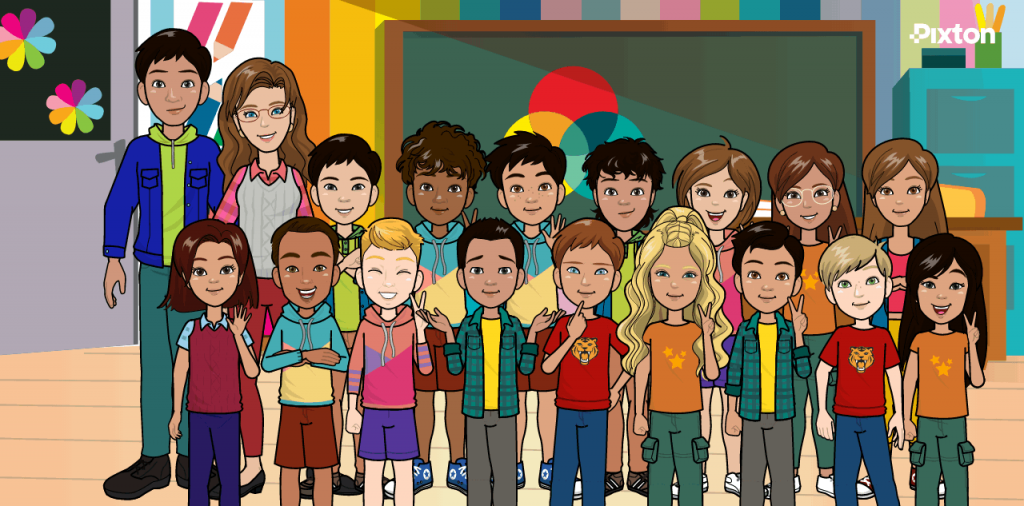
One of the special things about being in Grade 3 at BIS is enjoying a laugh every Friday afternoon in a session that we like to call… Joke Friday. Since the beginning of the year, we have finished off each week with jokes and riddles, accompanied by giggles and sniggers. Joke Friday is a special part of our Language program, as it supports the development of confidence, rehearsing & presenting, not to mention exploring some of the more complex features of English grammar such as idioms, puns and homophones. Here is a selection of our favorite jokes so far this year.
- Why is dark spelled with a k and not with a c? You can’t c (see) in the dark.
- What instrument can be found in the bathroom? A tuba toothpaste.
- Why did the photo go to jail? He was framed.
- How does the man on the moon cut his hair? Eclipse it.
- Why can’t you trust zoo animals to take a test? Because there are too many cheetahs.
- What did the cat have for breakfast? Mice bubbles.
- Why are fish so bad at basketball? They don’t like getting close to the net.
- Knock, knock. Who’s there? Lettuce. Lettuce who? Lettuce in!
- What tree can fit in your hand? A palm tree.
- What do Santa’s elves learn at school? The ELFabet.
- Why doesn’t a cow like to sing a song? Because the other cows are gonna say “booo”.
- What do you call a fish that wouldn’t share its stuff? Shellfish.
- What do you call a cheetah that broke the rules? A cheater.
- Why was the nose feeling sad? He was tired of getting picked on.
- What do you call a bicycle that is alive? A life cycle.
Sharing the planet meets How we organize ourselves…
Two of our G3 Units of inquiry this semester connect to each other beautifully. We were able to identify local and global problems and the organizations and individuals who help. We also discussed the impact our needs and wants have on animals. To tie the topics together, the Grade 3 students created their own stop motion movies. They followed a 6-step process: planning, creating props, experimenting with the app, the challenge of taking around 300 photos to make 1 minute of film, and finishing it all off with narration to match. There are some really important messages about caring for our environment and looking after animals and habitats in danger. Click on this link to see the Grade 3 Seesaw Blog, where you can see a few of our amazing stop motion movies. FYI, we used the app ‘Stop Motion Studio’ (free) which is on both Google Play and App Store.
We also looked into organisations that help make a difference in the world. As a response, we came up with a quick list of our Top Tips for making better choices in our world today!
- Make artwork out of your rubbish.
- Plant more plants.
- Use an electric car.
- Bring your own shopping bags.
- Don’t cut trees, plant some instead.
- Don’t travel too much by airplane or car.
- Don’t support breeding of animals, adopt instead.
- Be green.
- Reduce, reuse, recycle.
- Join a clean up team.
- Rethink your purchases – do you REALLY need it?
- Fix it, don’t nix it.
- Say ‘no thanks’ to plastic straws & extra sauce.
- Donate food to those in need.
- Reuse and re-gift your unneeded stuff.
Hey, BIS Community! Help us answer this simple survey so we can find out more about local and global issues and the organisations and individuals who are trying to help. Here is the link to the G3 survey.
Grade 4 Novel Study
The Iron Man by Ted Hughes has been Grade 4’s shared novel for this unit of inquiry: where we are in place and time.
A study of the cover art introduced the book. Students used a visible thinking routine SEE – THINK – WONDER to generate discussion before starting to read.

After engaging in Chapter 1: The Coming of the Iron Man together, Grade 4 completed a collaborative document. They asked three questions from their reading and made three predictions about what might come in the following chapters.
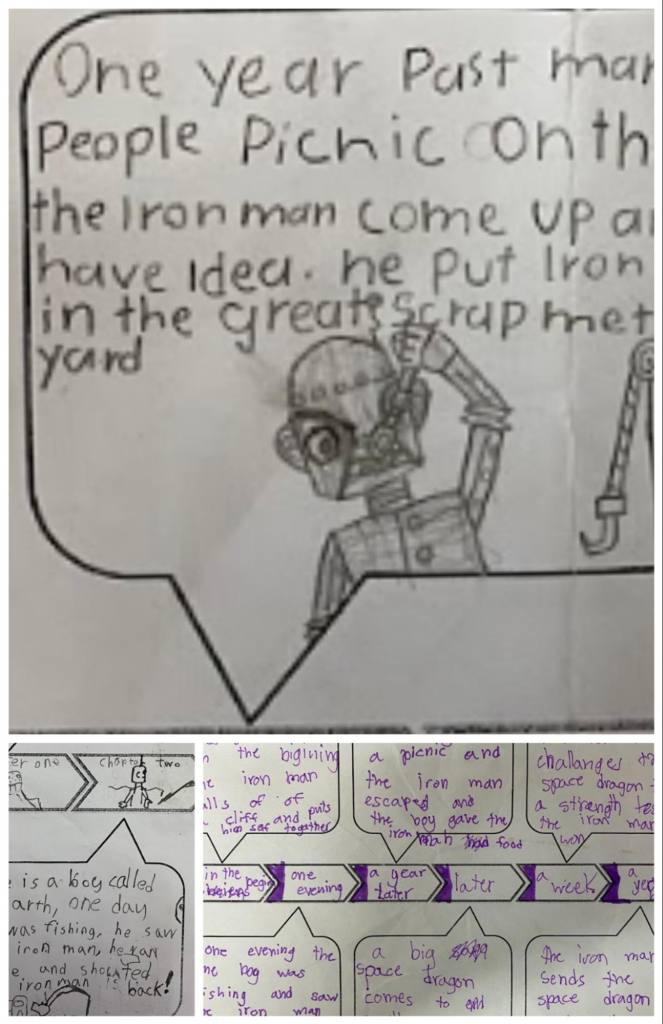
These are some of Grade 4’s text-related questions and predictions.
In connection with mathematics, students searched the text for key language that supports the chronology of the main events and suggested a passage of time. Some examples they found, “One evening…” (p19), “Next morning..” (p23), “And so it went on, day after day.” (p25), and “…the Spring came round the following year…” (p32). Grade 4 students presented the main events as a timeline.
Extending this task, Grade 4 were excited to explore Google Earth technology to produce individual “Journey of The Iron Man” projects. They located details from the text to give clues about the setting and using these keywords, and prior knowledge as global citizens, explored countries in search of cliffs, rivers, oceans, farmland and scrapyards. These locations became a map of settings for the key events in the novel.
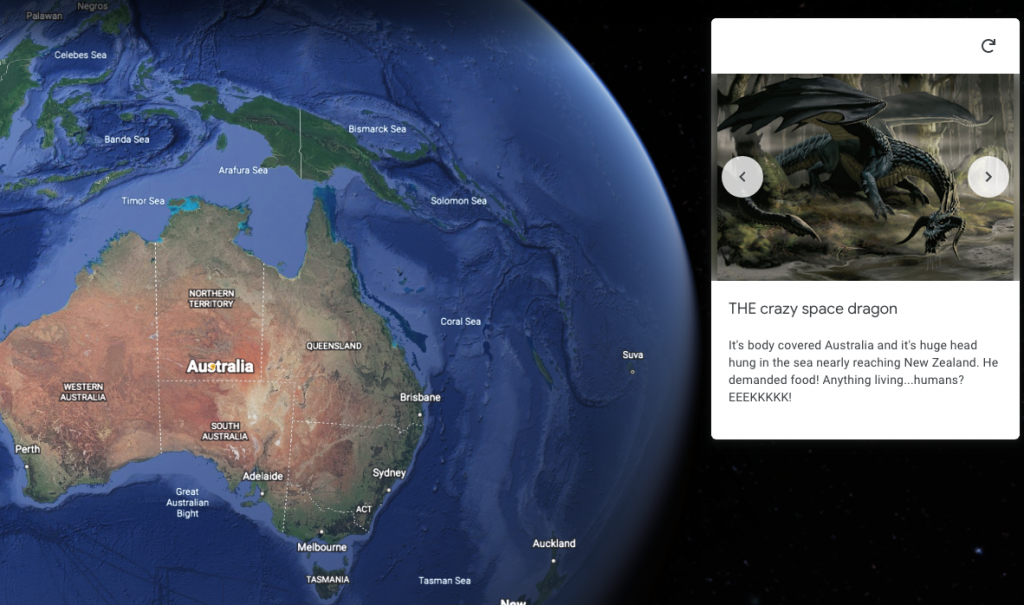

To finish the study, students are writing a short comparison between the film “The Iron Giant” and the text “The Iron Man”. They have organised their ideas using a graphic organiser and have begun to draft their writing. Look for final copies published in SeeSaw.
SAVE THE DATE!!! Yay, Grade 4 are finally able to host their market – cooperative (How we organise ourselves summative assessment task) on Wednesday April 13th.
Invites with details will be shared soon and we can hardly wait.
Grade 5 Data Analysis
“It is important that learners acquire mathematical understanding by constructing their own meaning through ever-increasing levels of abstraction, starting with exploring their own personal experiences, understandings and knowledge. Additionally, it is fundamental to the philosophy of the PYP that, since it is to be used in real-life situations, mathematics needs to be taught in relevant, realistic contexts, rather than by attempting to impart a fixed body of knowledge directly to students.” IB Mathematics Scope and Sequence – Effective Mathematics Practice
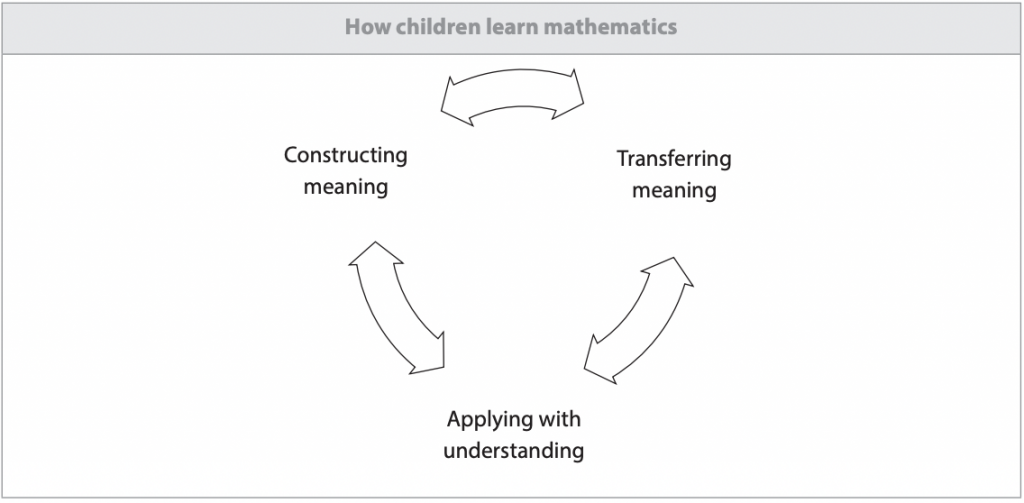
Throughout the year in Grade 5, students have been building on their understanding of data analysis. Students first were given the opportunity to construct meaning. They were given data to analyse and watched videos and discussed the different kinds of graphs they could use and why they could be used. Students built on their understanding that there are different kinds of graphs that have different purposes.
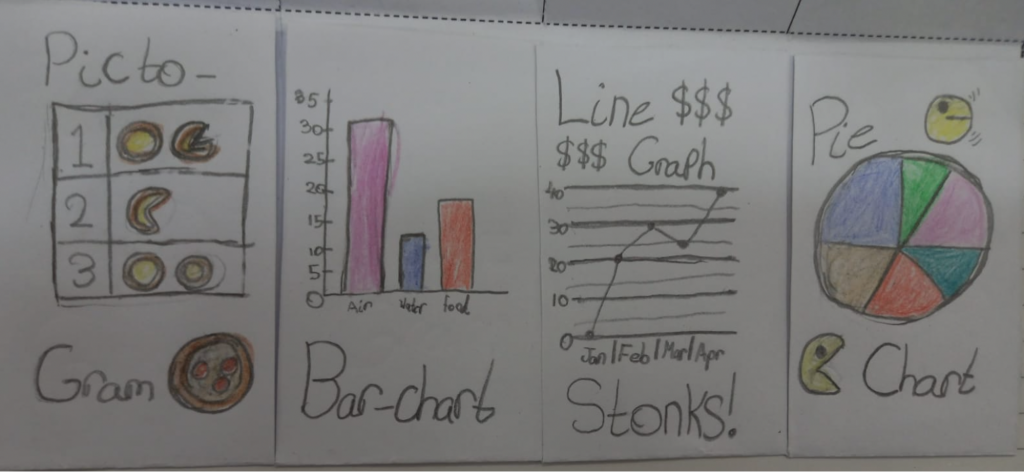

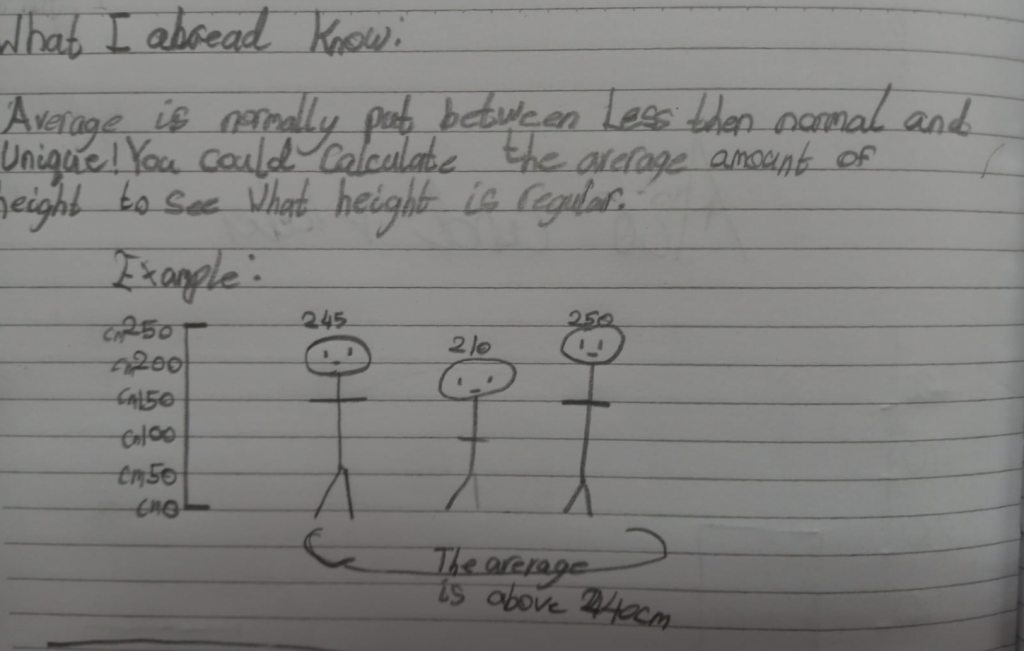
After this, students were given data related to our previous unit on biodiversity. This learning experience would allow students to transfer meaning. Students worked in small groups to design hand drawn and digitally created graphs focusing on endangered animals and global issues. We also read the book “If the world was a village” as a tuning in activity for our Grade 5 Exhibition. Students collaborated to decide on the following
- Digital or hand drawn
- Scale to be used
- Type of graph to be used
They had to explain why they made these choices and compare their choices with others.
Finally, students were ready to create their own survey and analyse that data they had collected. Students asked questions of interest to their classmates using Google Forms which allowed them to collate the data into graphs and tables. They explored and reflected on the types of questions they could ask and how that affected the results that they got. This allowed them to apply with understanding.. Here are a few examples.
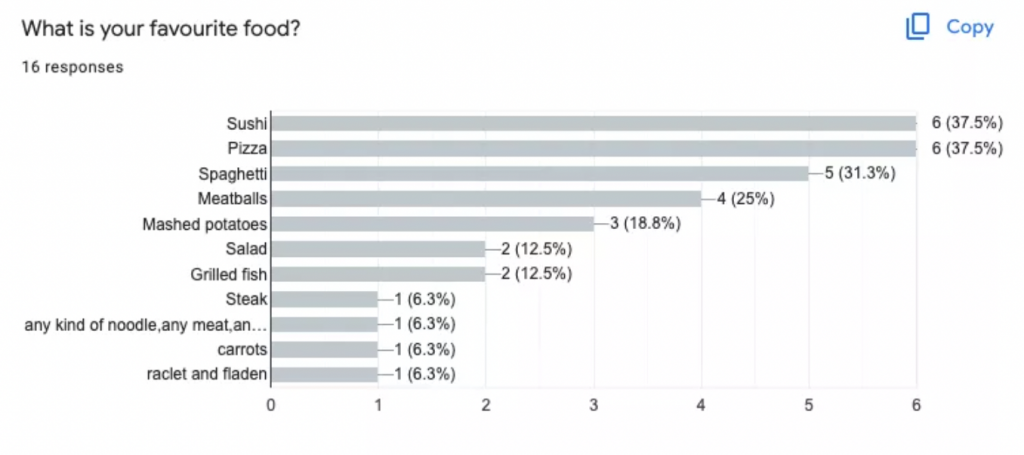
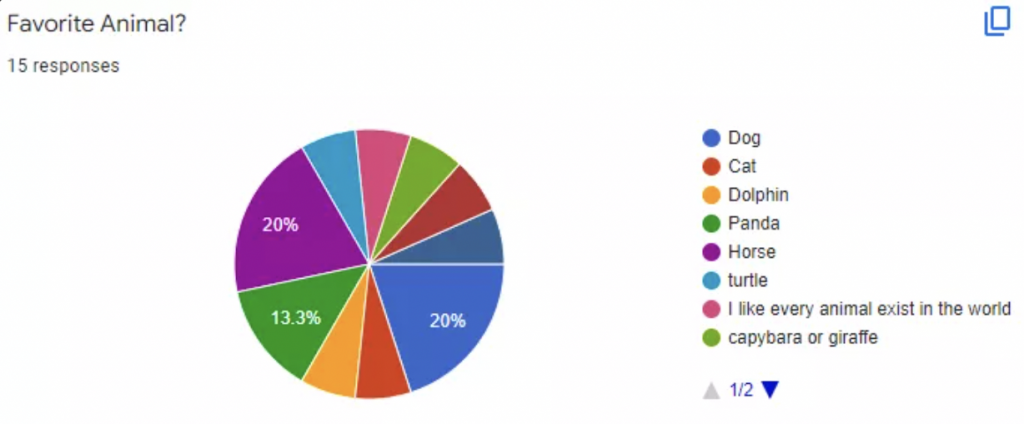
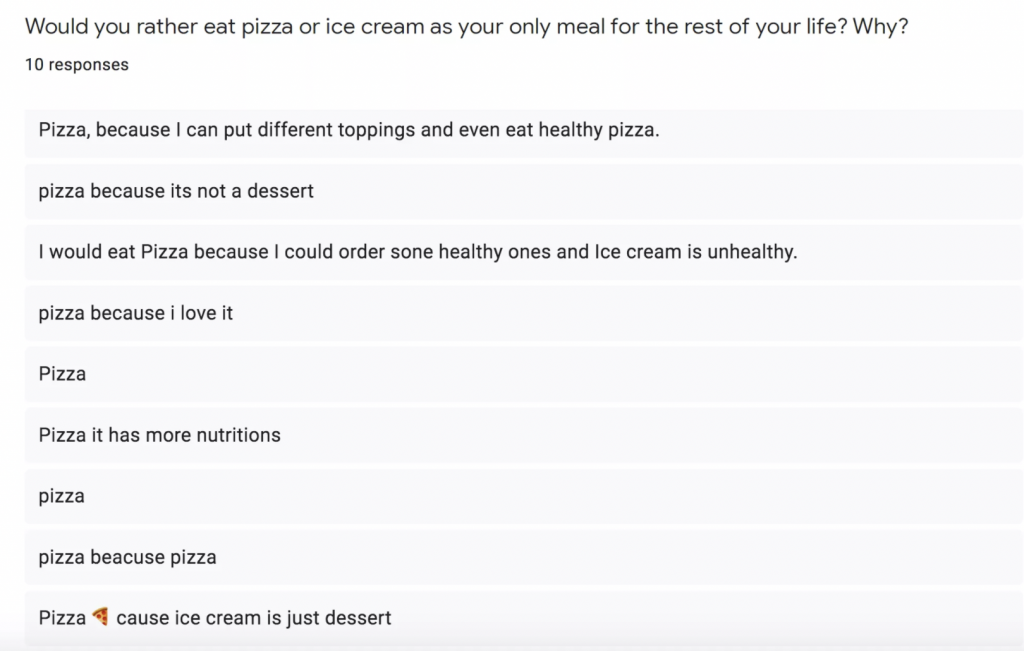
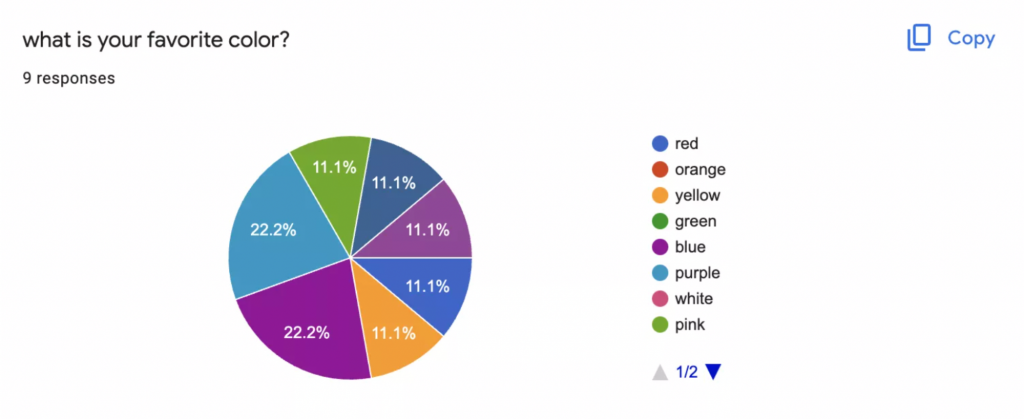
As Grade 5 students move into the next phase of their PYPx, they will be able to use the knowledge, skills, and understanding gained during this unit on data to gain first-hand knowledge from students and our bis community that will guide them. I am looking forward to see what they will come up with!

